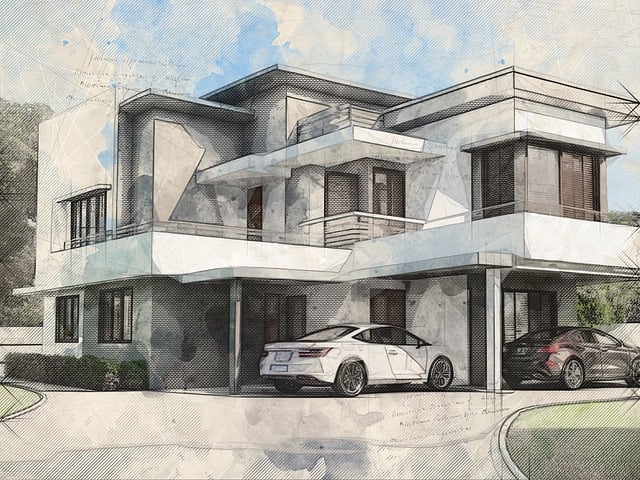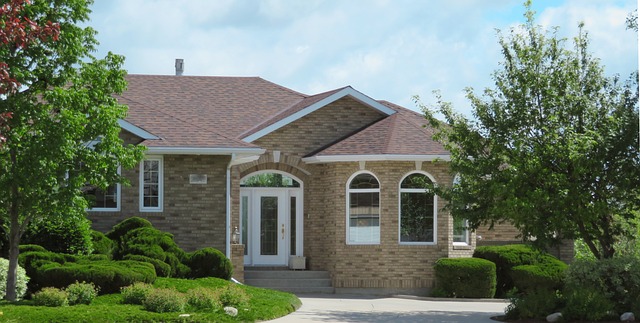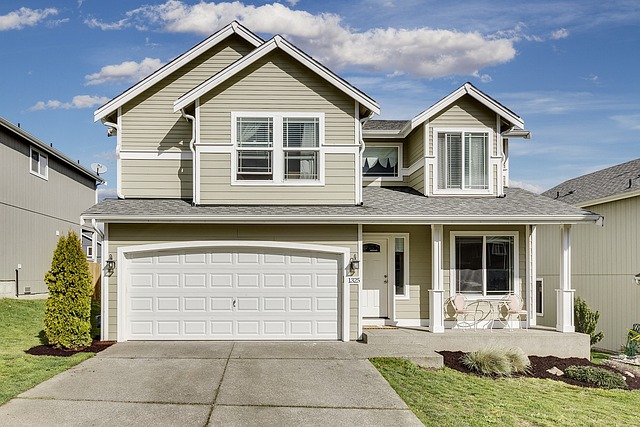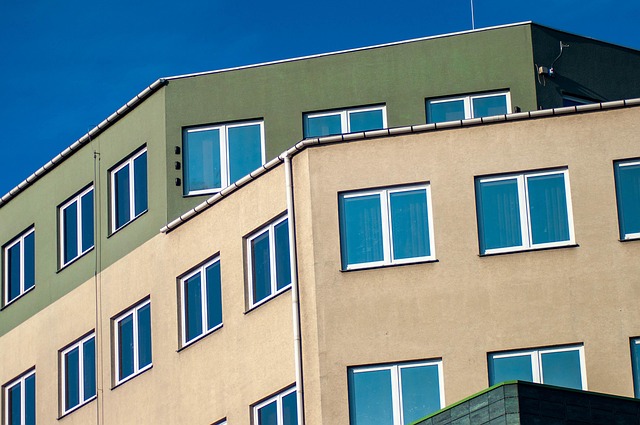Executive Condos (ECs) near MRT stations in Singapore face natural wear and tear from environmental factors, with structural issues like cracks and discolored tiles common in longer-standing properties. Regular maintenance, strategic location, and technological advancements are crucial for preserving value and appeal. Over a decade, ECs near MRT have seen demographic shifts, attracting diverse buyers due to their low-maintenance lifestyle and central locations. Investing in these properties offers long-term gains, with high demand driven by convenient public transport access. Community engagement thrives, creating strong neighborhood connections over time. Regulatory changes impact market dynamics, requiring developers to adapt marketing and management strategies. Future-proofing through smart home technology and keeping up with transport infrastructure developments ensures ECs near MRT remain competitive for the next decade.
After a decade, Singapore’s Executive Condos (ECs) near MRT stations face distinct challenges and opportunities. This article delves into the aging process of these properties, exploring wear and tear through structural analysis. We discuss the importance of regular maintenance and technological advancements modernizing EC features. Changing demographics and value appreciation are also touched upon, along with community engagement and regulatory shifts impacting ownership. Finally, we offer strategies for future-proofing your EC investment.
- The Aging Structure: Understanding Wear and Tear
- Maintenance and Upkeep: A Long-Term Commitment
- Technological Advancements: Modernizing the EC's Features
- Changing Demographics: Who Calls These Places Home?
- Value Appreciation: Investing in an Older Executive Condo
- Community Engagement: Preserving Social Connections
- Regulatory Changes: Impact on Ownership and Management
- Future Proofing: Preparing for Another Decade
The Aging Structure: Understanding Wear and Tear

Over time, even in well-maintained areas like an Executive Condo near MRT, wear and tear naturally occur. The structure of an EC, despite being designed for longevity, is subject to various environmental factors such as humidity, sunlight, and temperature fluctuations, all of which contribute to its aging process. This is evident in the form of cracks on walls, discolouration of tiles, and loose fixtures—common issues faced by longer-standing properties.
Regular maintenance can help mitigate these effects but cannot completely prevent them. The continuous exposure to these elements takes a toll on building materials, leading to structural changes over ten years. Understanding these natural processes is essential for residents and prospective buyers alike when considering an EC’s long-term viability, especially in densely populated urban areas where space and infrastructure are at a premium.
Maintenance and Upkeep: A Long-Term Commitment

After a decade, an Executive Condo near MRT (Mass Rapid Transit) requires consistent maintenance and upkeep to preserve its condition and value. This long-term commitment involves regular inspections, repairs, and upgrades, ensuring that every component from the roofing to the appliances functions optimally. Owners must stay vigilant in addressing issues promptly, as neglecting routine care can lead to more severe problems and higher repair costs.
The strategic location of Executive Condos near MRT stations makes them attractive to residents and investors alike. To maintain this appeal, regular upkeep is essential, especially for common areas like lobbies, elevators, and landscaping. This includes deep cleaning, aesthetic enhancements, and ensuring accessibility features remain in top condition, providing a welcoming environment for current residents and potential buyers in the future.
Technological Advancements: Modernizing the EC's Features

Over a decade, an Executive Condo near MRT experiences significant technological transformations, keeping pace with Singapore’s digital evolution. Smart home systems become commonplace, allowing residents to control lighting, temperature, and security through intuitive mobile applications. These features not only enhance convenience but also contribute to energy efficiency. The introduction of high-speed internet infrastructure ensures that residents can leverage cloud services, smart entertainment options, and online connectivity at unprecedented levels.
Moreover, the integration of Artificial Intelligence (AI) and Internet of Things (IoT) devices further modernizes these properties. AI-powered virtual assistants offer personalized recommendations and automate routine tasks, while IoT sensors optimize resource utilization, enhancing overall living experiences. These technological advancements not only cater to contemporary lifestyles but also prepare Executive Condos for the future, ensuring they remain desirable residential options in a rapidly changing urban landscape.
Changing Demographics: Who Calls These Places Home?

Over a decade has passed since many Executive Condos (ECs) first emerged, and their landscapes have undergone significant transformations. These changing demographics reflect evolving societal trends and shift who calls these properties home. Initially, ECs often attracted young professionals and families seeking affordable luxury in proximity to urban amenities, with many located near MRT stations for easy access to the city’s transportation network.
Today, as time has passed, this demographic mix has broadened. Retirement-aged individuals and those downsizing from larger homes now find these compact living spaces appealing, valuing the low-maintenance lifestyle and central locations that align with their changing needs. This shift is evident in many ECs across Singapore, particularly in areas once dominated by younger residents, now welcoming a more diverse population.
Value Appreciation: Investing in an Older Executive Condo

Investing in an older Executive Condo (EC) near MRT stations can offer significant value appreciation over a decade, making it an attractive option for long-term property investors. The proximity to public transportation is a key advantage, as it increases accessibility and desirability among buyers and renters alike. Over 10 years, the demand for properties in convenient locations typically grows, driving up property values. This trend is especially prominent in urban areas with efficient public transport systems like MRTs.
An EC near MRT stations benefits from higher occupancy rates due to its accessibility, which can lead to steady rental income and potential capital gains when reselling. Moreover, the value of such properties often outpaces inflation, providing investors with a solid long-term investment strategy. As the area develops over time, the property’s worth is likely to increase, making it a wise choice for those seeking substantial returns on their real estate investments.
Community Engagement: Preserving Social Connections

After a decade, an Executive Condo near MRT (Mass Rapid Transit) often finds itself at the heart of a thriving community, where social connections flourish. The condo’s strategic location and proximity to public transportation have likely played a significant role in fostering these relationships. Residents, who may have initially moved in for its convenience, often develop strong bonds with their neighbors over time. Regular interactions at common areas, such as the void deck or the condo’s garden, create a sense of belonging and community spirit.
This ongoing engagement is particularly notable among long-time residents, who’ve witnessed the area’s transformation over the years. The Executive Condo near MRT becomes more than just a place to live; it’s a home where friendships are forged, families grow, and a sense of neighborhood is cultivated. This social fabric, so vital for well-being, is one of the most enduring legacies of an EC after 10 years.
Regulatory Changes: Impact on Ownership and Management

Over a decade, regulatory landscapes evolve, and these changes significantly influence the ownership and management dynamics of an Executive Condo near MRT. Initially designed to cater to high-income earners seeking a second home or investment property, stringent regulations introduced over time can impact affordability and accessibility for prospective buyers. New rules might include restrictions on foreign investments, changes in stamp duties, or enhanced transparency requirements for owners, all of which shape the market environment.
In response, developers and property managers must adapt their strategies. They may need to refine marketing approaches to target different buyer personas, explore innovative financing options, or implement efficient management practices to maintain competitiveness in an ever-changing regulatory framework. An Executive Condo near MRT, once a symbol of exclusivity, might now require re-positioning and enhanced services to attract buyers and tenants amidst evolving legal parameters.
Future Proofing: Preparing for Another Decade

As time marches on, especially in the dynamic real estate landscape of Singapore, it’s crucial to consider how an Executive Condo near MRT stations can evolve over a decade. To ensure its longevity and appeal for another 10 years, future-proofing is essential. This involves strategic renovations and upgrades that cater to changing lifestyles and market trends. For instance, integrating smart home technology not only enhances comfort but also increases property value, appealing to tech-savvy buyers.
Additionally, staying attuned to transport infrastructure developments near the Executive Condo can significantly impact its desirability. Upgrades to MRT lines or new transportation hubs could attract a younger demographic seeking convenient commutes. Thus, maintaining and improving facilities that cater to this evolving group is key to keeping an EC near MRT stations relevant and competitive in the coming decade.
After a decade, an Executive Condo near MRT undergoes a multifaceted transformation. The aging structure requires meticulous maintenance and upkeep, while technological advancements modernize its amenities. Changing demographics and value appreciation make these properties attractive investments. Community engagement keeps residents connected, and regulatory changes shape ownership dynamics. To ensure longevity, future-proofing strategies are essential for this evolving housing segment, making it a smart choice for those seeking both convenience and community in the years to come.
